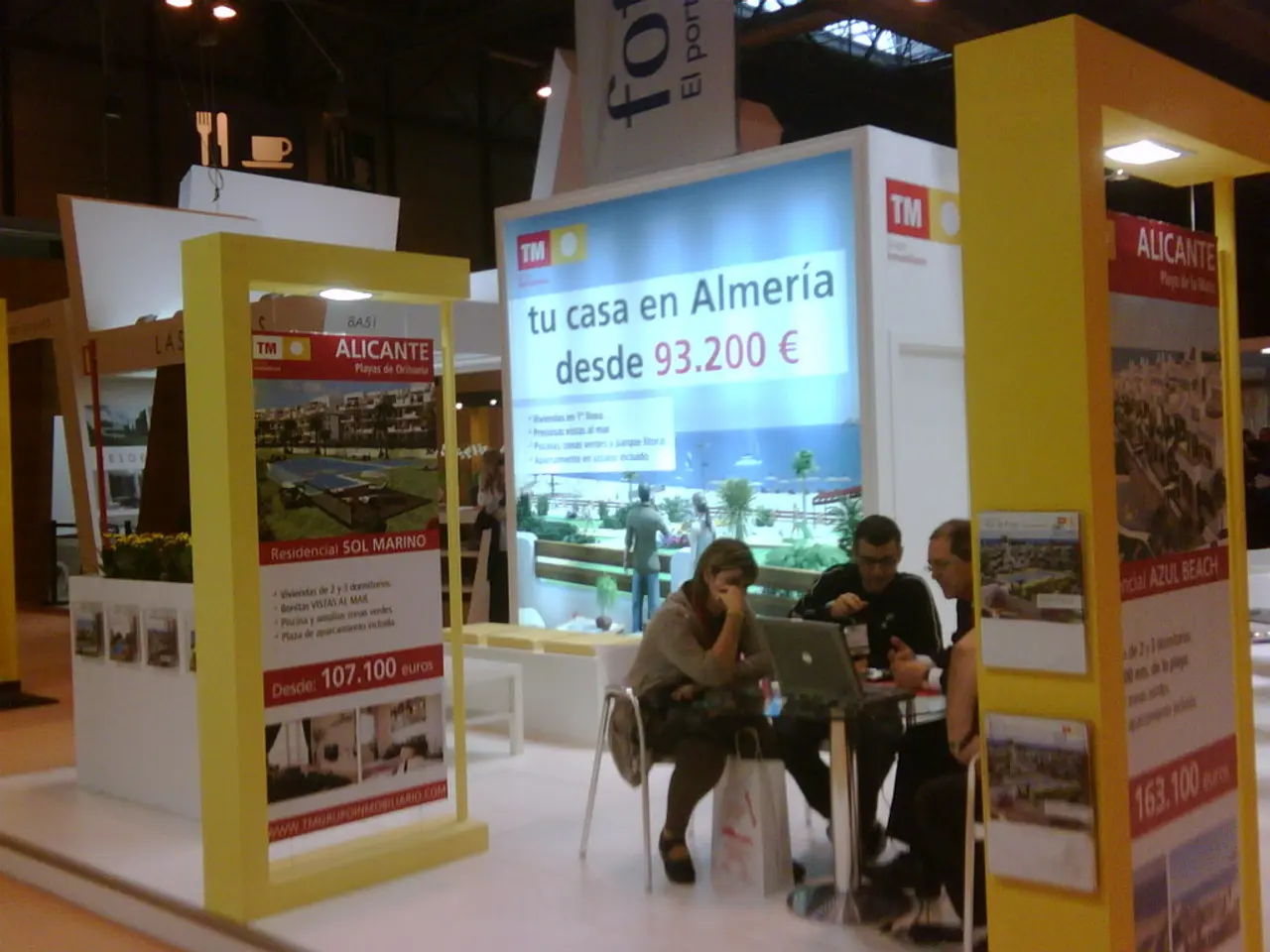International Trade Conflict: Determining the Source of von der Leyen's Billion Euro Pledges Funding - Customs disagreement over the Leyens' trillions in pledged expenses: determining financial responsibility
The European Union (EU) and the United States have reached a significant trade and economic agreement, with the EU pledging to invest an additional $600 billion and purchase $750 billion worth of US energy over the coming years. However, the precise financing mechanisms for these commitments remain undisclosed.
The EU currently imports $100 billion worth of US energy annually and expects to increase this to $250 billion annually in the future. This shift is part of a broader strategy to reduce dependence on Russian energy and bridge a $150 billion gap. The EU Commission considers the import of American nuclear technology as a major pillar to reach the billion-dollar pledge.
Business Europe, the European business association, states that EU investments in the US already amount to around $2.4 trillion and are likely to increase. Despite this, the agreement, according to Business Europe, is not what they had hoped for, and they are not in favor of increased tariffs.
The EU aims to phase out Russian gas imports only by 2028. However, Russia accounted for 15% of EU LNG imports in the first months of this year, and the US must ensure unhindered access and sufficient production and export capacities for the EU to purchase US energy.
Lars Klingbeil, Germany's Finance Minister, has expressed some concerns about aspects of the agreement. Germany's Vice-Chancellor Klingbeil stated that he does not know whether the purchases involve private investments. The exact details of which companies have expressed investment intentions and to what extent have not been provided by the EU Commission. The Commission states that expressions of investment interest have been received, but it cannot guarantee these investments.
The deal follows a period of escalating tariffs, including US tariffs on EU steel and aluminum, and EU counter-tariffs. The agreement involves tariff reductions and quotas for metals, and commitments to manage non-tariff barriers in sectors like agriculture and digital trade. Trump has threatened to impose tariffs of 35% if the EU does not deliver on these investments, while US President Donald Trump interprets the $600 billion as funds at the disposal of the US.
The EU's approach to financing these commitments is likely to involve a combination of public budget allocations, private sector investment, and contractual commercial arrangements rather than a singular funding source. The EU's final trade deal with the US still needs to be signed.
[1] EU-US Trade and Technology Council
[2] EU-US Trade and Technology Council: Joint Statement
[3] EU-US Trade and Technology Council: Fact Sheet
- The EU's employment policy is anticipated to be significantly impacted by the increased investments in the US, with potential changes in the energy sector potentially influencing job markets in EC countries.
- The EU-US Trade and Technology Council, as a result of its Joint Statement and Fact Sheet, could possibly alter existing policy-and-legislation concerning trade, technology, and energy, potentially affecting employment policies in EC countries.
- Migration patterns might be influenced by changes in employment opportunities stemming from the EU-US Trade and Technology Council, thereby creating a new dynamic in general-news discussions about work and immigration.
- In the context of war-and-conflicts, changes in energy policies due to the EU-US Trade and Technology Council could potentially impact global energy markets, affecting countries that rely on energy exports to generate revenue.
- Crime-and-justice investigations may need to consider the implications of the EU-US Trade and Technology Council in cases involving car-accidents, fires, and other incidents related to energy infrastructure, given the increased reliance on US energy by EC countries.







